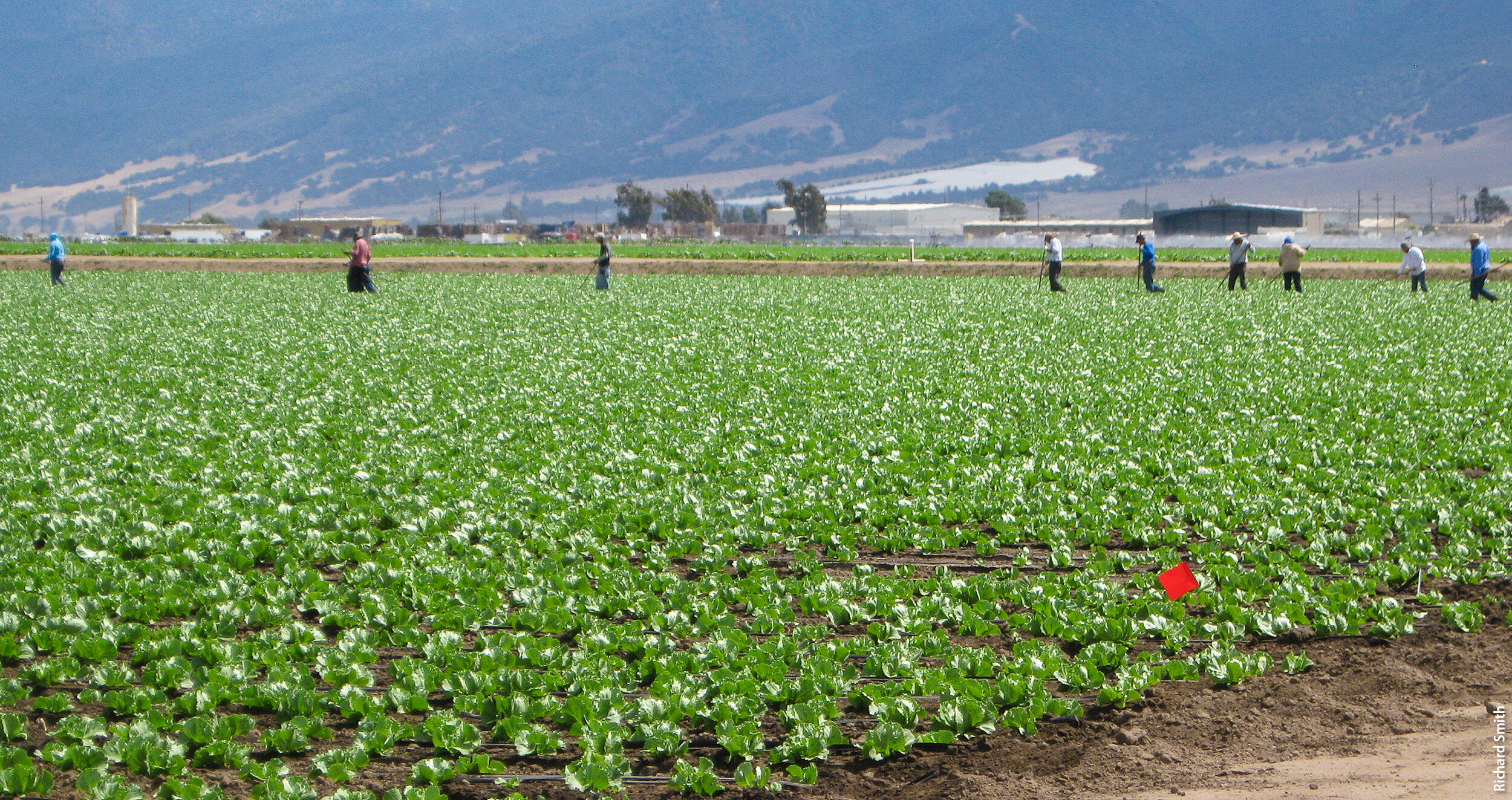Efficient, Effective Lettuce Thinning
You don’t have to be a rocket scientist to manually thin a lettuce crop, but apparently being inventive can make the process much more efficient. That is why one local grower developed a computer-controlled, robotic system that gets the job done faster, cheaper and, as a bonus, improves the yields.
Mike Sudduth of Brawley came up with the idea for the system now used on his farm and his partner’s farm in Salinas after the mechanical, or automated thinners he tried didn’t adequately do the job. So, he did what he said farmers routinely do.
“Farmers here are pretty notorious for inventing what they need on the farm when they need it,” said Sudduth, who is an Imperial Valley Vegetable Growers Association Advisory Board member.
Typically, lettuce seeds are planted close together to ensure enough seedlings for the crop. When seedlings grow, they are thinned to about a foot so there is enough space for the lettuce to mature. The thinning is commonly done by manually with a hoe. Yet there has been a proliferation of automated thinners coming to market because the cost of labor is skyrocketed while farm labor is becoming more difficult to find.
Early mechanical lettuce thinners tried to replicate the motion of a hoe pulling out unwanted seedlings. However, Sudduth found they a tendency to nick or damage the remaining plants. And worse, he said mechanical thinners were worthless after a storm or on wet ground. So, he decided to come up with something he could design specifically for his fields.
His idea is an automated system to burn out unwanted plants with a heavy dose of fertilizer.
“Nobody was making anything like it,” Sudduth said, so he experimented by walking through his fields with a backpack sprayer to determine the amount of fertilizer needed, the length of spray and other field specifics.
Then, he worked with San Diego tech firm Vision Robotics to design a computerized system that a tractor pulls through lettuce fields. The system uses a camera to feed information to the onboard computer that determines where, how much and when the material is sprayed.
“It took a lot of money to get it to work the first few years,” he said. But since then, Sudduth Farm’s Josh Sells has operated the system with good results and without much other than regular repairs and maintenance.
The value of automated thinners is undeniable. A 2014 study by the University of California Agriculture and Natural Resources Department, found mechanical thinning was nearly three times as efficient and effective as the manual method. Estimates are that a tractor driven system can cut down on 20 to 25 workers in a field.
And, it turns out, Sudduth’s system has an additional benefit. A side effect of using fertilizer to burn out unwanted seedlings is that nourishes the growing lettuce plants, increasing the crop yield.
Kay Day Pricola, IVVGA executive director, wasn’t the least bit surprised by the system Sudduth developed. “Valley produce growers are incredibly ingenious and tenacious at working to develop solutions. It’s always great to see how well things turn out.”

